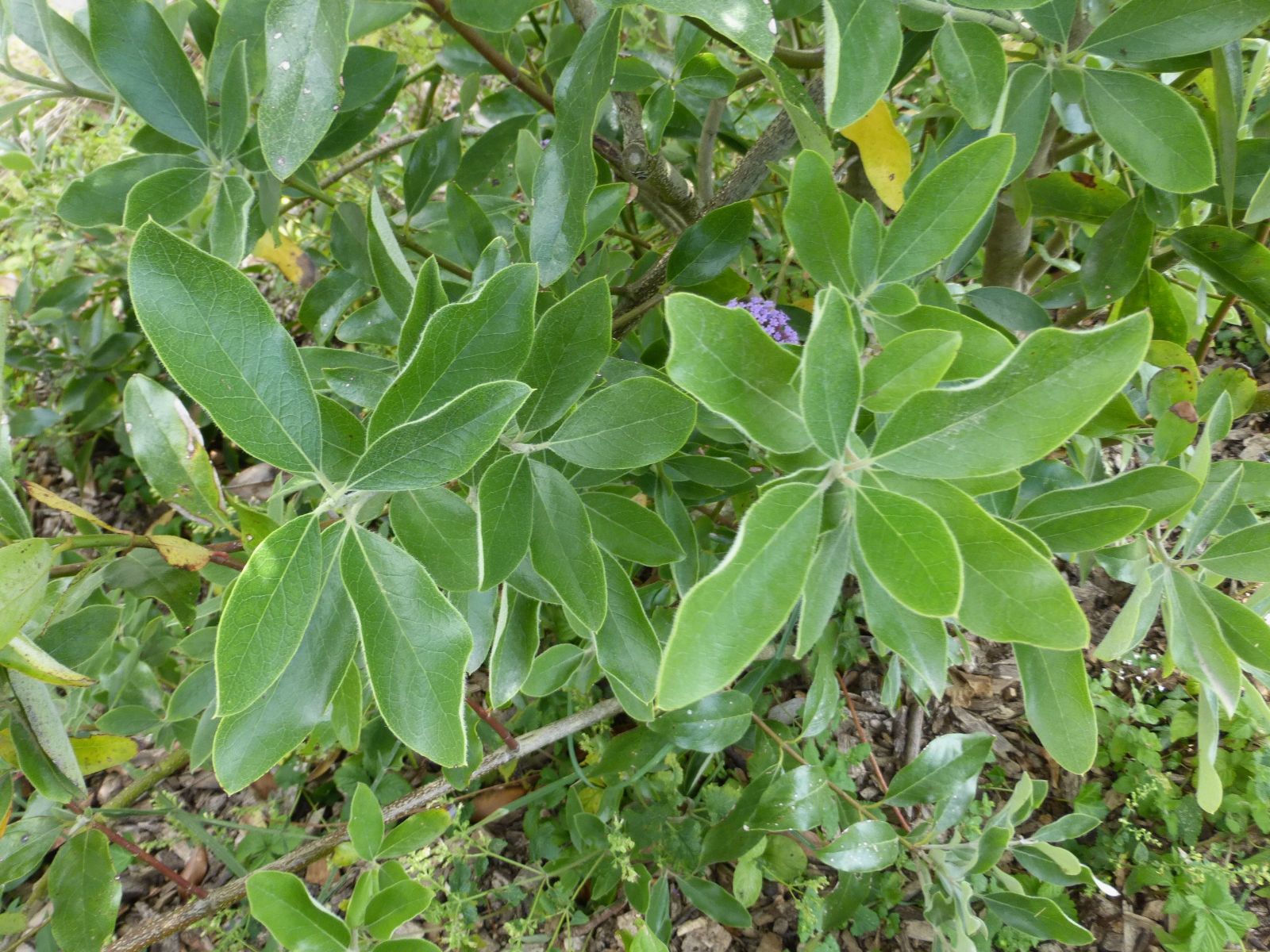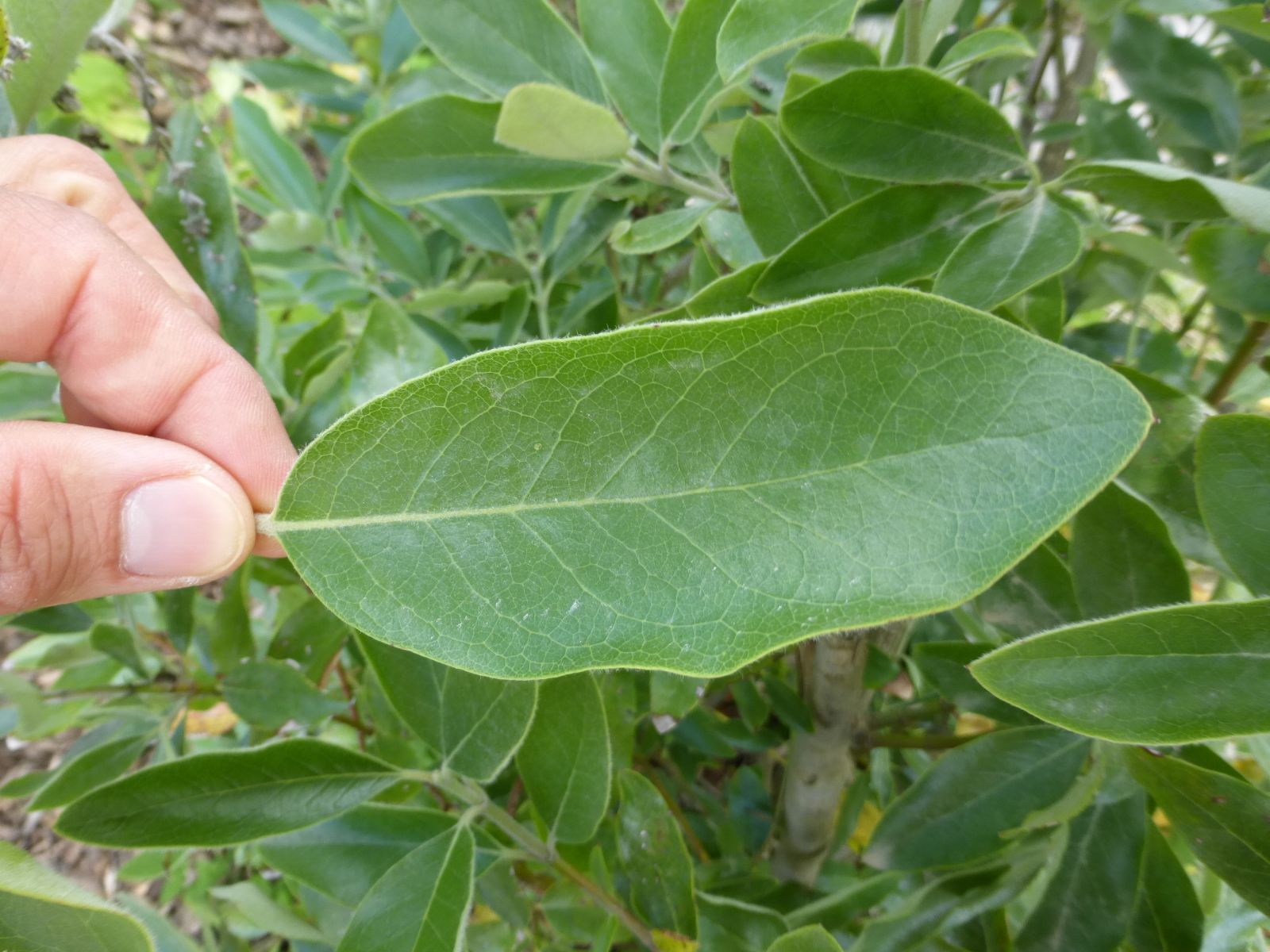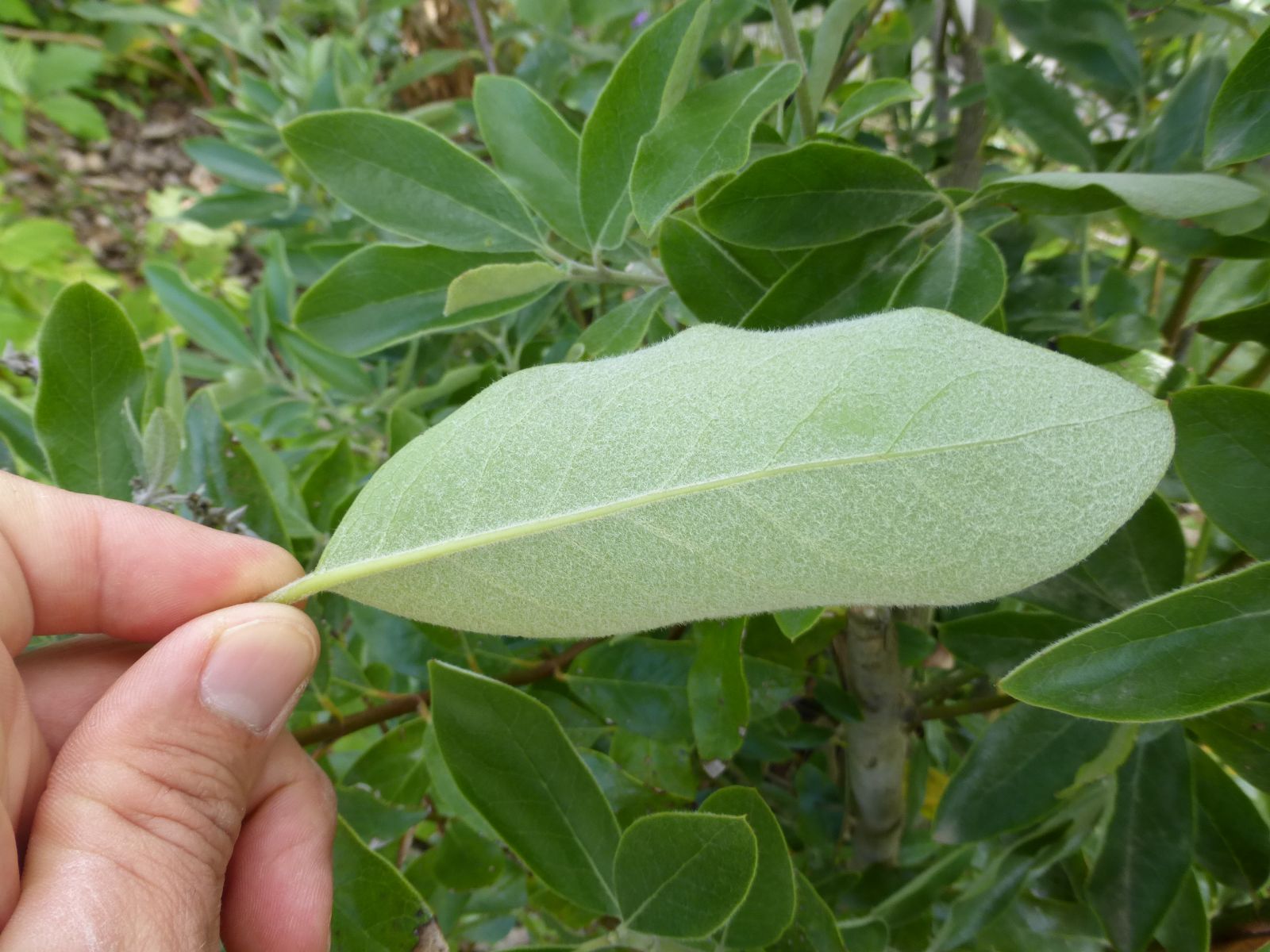Garrya laurifolia
Credits
Article from Bean's Trees and Shrubs Hardy in the British Isles
Recommended citation
'Garrya laurifolia' from the website Trees and Shrubs Online (treesandshrubsonline.
Genus
This species is represented in cultivation by the following variety, which perhaps represents no more than the upper part of a range of variation in size and shape of leaf, but is worth recognising in gardens:
var. macrophylla (Benth.) Wanger.
Synonyms
G. macrophylla Benth
A very robust evergreen shrub, forming naturally a small tree; young wood covered with a grey tomentum. Leaves on wild plants 2 to 6{1/4} in. long, 1{3/16} to 2{1/4} in. wide, broad elliptic, obtuse to rounded and apiculate at the apex, wedge-shaped to rounded at the base, dark green and glabrous above, felted beneath with a grey tomentum; on cultivated plants the leaves are mostly 6 to 7{5/8} in. long, 2{1/4} to 3{1/8} in. wide, and may be obovate but in other respects are like those of wild ones; stalk {1/2} to 1 in. long. Male catkins 1 to 3 in. long, axillary, often branched; female flowers produced in the axils of leaflike bracts on lateral shoots 3 to 5 in. long.Introduced from Mexico in 1846. This species can be grown on a wall near London, but in Guernsey it makes a small tree of very striking aspect. It is one of the largest leaved evergreens that can be grown in the open air. Flowers in May and June, but has no attractions apart from its striking foliage. This shrub is frequently met with as G. fadyeni, which is a quite different species with much smaller leaves, found in the West Indies, and not hardy.



